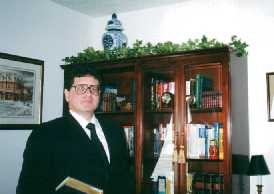
When a head of state unexpectedly dies - monarchy or republic - the citizenry is understandably shocked. They are not shocked, however, when a successor is immediately named. After all, most governments have a clear succession plan based on law, tradition, or both. If the president or CEO of a major corporation meets an untimely death, retires, or simply moves on, there is often a succession plan already in place. Similar plans are usually in place for other top ranking executives. Succession plans provide for continuity of operation in an organization or government. Ideally, but not always, the successor is groomed with the knowledge necessary to take over. When Franklin D. Roosevelt died suddenly in 1945, his vice-president, Harry Truman, realized how little the late president had prepared him, particularly with regard to knowledge about the war and forthcoming problems with the Soviet Union. Truman later said, "I felt like the moon, the stars, and all the planets had fallen on me."
When a key employee suddenly leaves or becomes incapacitated, in can seem like the moon has fallen on you, if not the planets and stars as well. With the employee goes key knowledge. In his article "The Value of Knowledge Capital," (American Programmer, March 1998), Paul Strassmann demonstrated how to quantify the value of organizational knowledge. The knowledge of an organization exists not in documents and databases, but in the collective mind of the organization - in the heads of people. A succession plan, then, should be a type of knowledge sharing, with the heir apparent under the wing, if you will, of the principal.
Think now of your own organization. Who are the key knowledge people, those whose incapacity or departure could, even temporarily, cripple your projects or long-term strategy? Don't evaluate only the managers, consider the rank and file. Who are the real knowledge experts, the team leaders, and the evangelists in your organization? How will you replace the woman who has worked in nearly every unit of your organization during the last twenty years, the one person who knows how things really work in both operations and the business objects of the new software model? How could you replace the evangelist for the new business unit that may provide essential cash flow during a possible recession? And what of the young, energetic technical wizard who is recently divorced and facing imminent financial pressures? He spends half his time mentoring the junior staff and is the only programmer who seems to truly understand the company's software development mission. These are the people who need to have identified, informed successors.
How should you create a succession plan for the mid-level managers and the rank and file? It's a form of risk assessment: first, identify every key person in your organization or team. The simplest way to do this is to ask "What if _______ resigned tomorrow?" Consider not only domain knowledge and technical expertise, but also personality, which is often the key trait in managers and evangelists. After you have identified the key people in your organization or project, evaluate who might make a good successor and put a plan in place to ensure they work closely together. These pairs do not necessarily have to have similar personalities or working styles. Several years ago, I was advised to pick a chief assistant who was virtually the opposite of me. I have done so on several occasions since, and the strategy worked well because of our complimentary styles.
A final word about these grassroots-level succession plans. Like board-level succession plans, it is not wise to publicize the contents, or even the existence, of such a plan. It's best to plan for the unexpected, but keep the plan under wraps rather than publicize it and spark the inevitable jealousies it would cause.